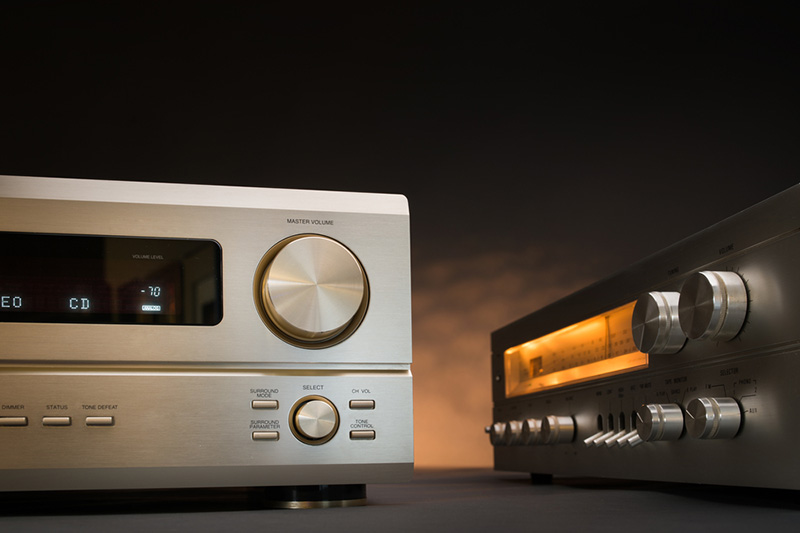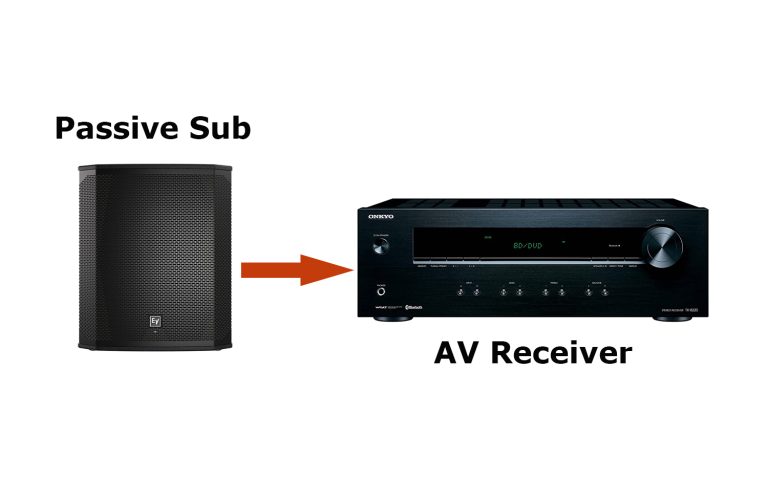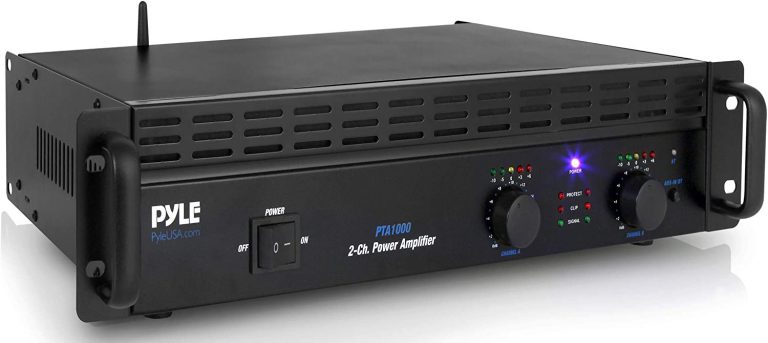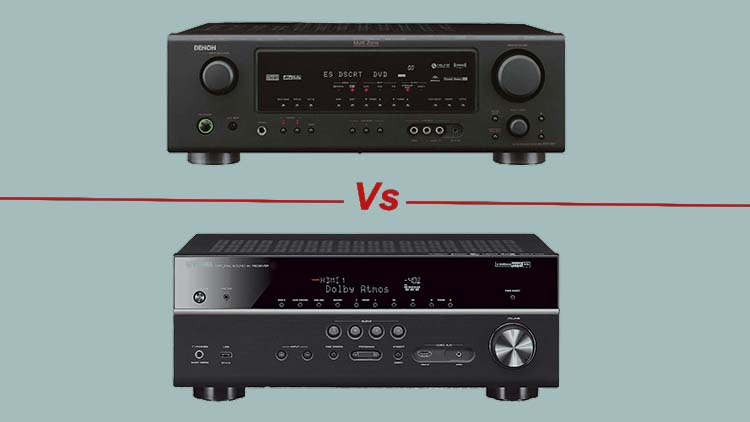Receiver vs Amplifier vs Preamp – The Ultimate Showdown
If it’s your first time setting up a sound system for your home theater, you may be confused about whether you should buy a receiver, amplifier, or preamp. Well, though these terms are often used interchangeably, there are some differences you should be aware of.
The key difference between a receiver vs amplifier vs preamp is how each device functions. While an amplifier mainly helps your speakers work by amplifying audio signals, a receiver connects input and output devices, plus has a built-in amp. A preamp merely boosts a weak signal before it is sent to the amp.

To get a better idea of how these devices are different let’s understand how each device works and the role it plays in your sound system. That way you can decide which of these devices you want to invest in.
Also read: How To Connect a Power Amp to an AV Receiver
Receiver vs Amplifier Vs Preamp
Choosing between a receiver and amplifier comes down to whether you’d like to go for an all-in-one audio unit (the receiver) versus using an audio unit consisting of separate, individual components (such as the amp and preamp).
So let’s examine the differences between the two options to see which is right for you:
| Feature | Receivers | Amplifier or Preamp |
| Convenience | All-in-one unit: The A/V receiver acts as a hub for the home theater, making it very easy to switch between devices. | Not as convenient but gives a personalized setup: They give you greater flexibility and control so you can build a system that meets your needs. |
| Set Up | Easy to set up | Challenging to set up if you are not familiar with audio equipment. |
| Purchasing Costs | It usually works out cheaper to buy one unit than to buy separate components. | The total cost of both devices is more when you are buying a separate preamp and amplifier |
| Upgrading Costs | High cost of upgrading/replacement: While it is cheaper to buy the whole unit, if you need to change a faulty component or need to upgrade, you would have to buy the entire unit even if the other components are working. | Easier to replace or upgrade components: You don’t need to replace the entire unit if one component fails. You can simply replace the damaged component. |
| Space Required | Saves space, good for smaller spaces. | Takes up more space, better for larger spaces. |
| Sound Quality | Amplifier quality in a receiver may not be as good as a stand-alone amp since it shares space with other components. | High-end amplifiers can deliver great sound quality and power. Preamps also enable your amplifier and speakers to perform at their best. |
What is a receiver?

Any sound system has three main components: the audio source (such as a DVD player), an amplifier (to amplify the signal from the audio source), and speakers.
Receivers not only perform the function of the amplifier but also have several other functions and features such as input and outputs, decoders, volume control, tuners, and preamps.
There are mainly two types of receivers- stereo and A/V (audio/video) receivers. Stereo receivers are mostly used for audio while A/V receivers support both audio and video and are ideal for home theater.
Also read: Connecting a Passive Subwoofer to a Receiver
What is an A/V receiver? What are its features?
An A/V receiver is essentially an audio/video switching device plus an amplifier. It is often called the “control hub” for the audio and video needs of the home theater system.
Its features include-
- Connecting audio and video input devices (such as DVD players, streaming devices, gaming consoles, blu ray players, etc)
- Connecting output devices. (speakers, TV, projector)
- Giving master control over volume settings, EQ settings, surround sound modes, etc.
- Decoding different surround sound formats such as Dolby digital. Atmos, DTS, etc.
- Usually five channels of amplification to drive surround sound speakers. Some even support 7.1 to 9.1 configurations.
Pros of A/V receivers
- It is convenient as it connects everything together and makes it much easier to switch between all your devices.
- Compared to setting up ‘separates’, such as amplifiers and preamps, it is much easier to install.
- Takes up less space.
- They usually work out cheaper than the total cost of buying separate components.
Cons of A/V receivers
- Since the amp has to share space with other components, the quality, and power of the amp will not be as high as a separate, dedicated amp.
- The cost of upgrading/replacement is high as you would need to buy the entire unit.
What is an amplifier?
The primary role of an amplifier is to strengthen or boost an audio signal to make it powerful enough to play through your speakers. However, when using an amplifier, you also need other components such as a preamp and speakers to deliver the sound.
There are mainly two types of amplifiers: power amplifiers and integrated amplifiers.
Power amplifiers
These are stand-alone amplifiers that boost audio signals to play through speakers. They do not contain a pre-amp.
Integrated amplifiers
Integrated amplifiers consist of both a preamp and a power amplifier.
Pros of amplifiers
- It offers greater flexibility and control as you can choose the components you want such as the preamp, amp, etc rather than be stuck with only what the pre-built unit offers.
- It is easier to replace or upgrade components as you don’t need to replace the entire unit if one component fails. You can simply replace the damaged component.
- A high-end amplifier will give you better sound quality and higher power as compared to a receiver’s amp.
Cons of amplifiers
- Buying separate individual components like the amp and preamp is usually more expensive.
- For those who are not familiar with audio equipment, it can be quite complex to set up.
- Using separate devices takes up more space and moving them around isn’t very convenient.
What is a Preamp?
A preamplifier is a device that boosts a weak signal before it reaches the amplifier. It is the first stage of amplification.
How does it work?
Amplifiers require half to one volt of line-level signal to produce enough power to make a speaker work properly. If the signal is too weak, such as that of a microphone(which is between 1-100 milli-volts), you would get a very low level of muffled sound.
So you would need to amplify the signal first before it reaches the amplifier to enable the amplifier to do its job and drive the speaker.
This is where a preamp comes in. It amplifies the weak signal to the right level for the amplifier.
A/V preamps- (Pre/pro)
A/V preamps, also called preamp processors or “pre/pro” support multiple audio channels as well as surround sound processing technologies. Their features include
- Helping switch between both audio/video sources
- Processing audio and video
- Sending audio output signals to power amplifiers
- Additional features of A/V preamp processors comprise audio, video, and networking features.
Pros of Preamps
- The sound quality will be richer and fuller allowing your amplifier and speakers to perform at their best.
- It is convenient if you have multiple input sources to connect.
- For those with larger homes, you get more coverage and flexibility with a preamp.
- Using a preamp allows you to connect more speakers enabling you to get a fuller sound
Cons of Preamps
- The cost goes up when you purchase separate individual components.
- Requires more space
- It is more challenging to set up
Do I need to buy both a receiver and an amplifier?
As mentioned earlier, the receiver also performs the job of the amplifier in addition to its other features. So, no you don’t need to buy both a receiver and amplifier- you can choose either one.
Keep in mind though, that if you do choose to go for a standalone amplifier, you should get a preamp that works in line with your amplifier. These devices should have similar power levels to prevent signal distortions or unnecessary feedback.
However, if you buy an integrated amplifier, it will already contain a preamp.
Conclusion: Which is the better option for you
If you are an audiophile and have a good knowledge of audio equipment, you can consider opting for a separate amp and preamp. It allows you to have a more personalized setup without being restricted by the limitations of an all-in-one receiver.
Also, for those who have larger home theater rooms, this system can give you a truer signal and fuller sound and give your speakers more power.
But if you’re a beginner to home theater systems and don’t have much experience with audio equipment, we recommend buying an A/V receiver. It’s also a better choice if you have several input devices and budget or space constraints.
And just because receivers are a convenient option doesn’t necessarily mean you have to compromise on sound quality. If you buy a good quality receiver and speakers, you can get great sound.
Ultimately the choice depends on your budget, space, and knowledge of audio equipment.




